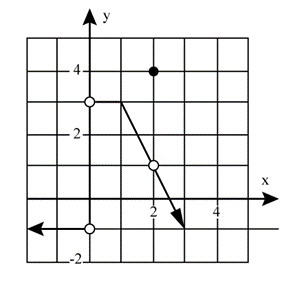Full-Length AP Calculus AB Test
Take our AP calculus AB practice exam. You can take our full-length exam (simulated like the actual exam) or just answer smaller batches of questions (if you are in a hurry).
What is the AP Calc Exam?
The AP calculus exam is an exam that you take to earn college credit. You will have the opportunity to take the AP calculus exam after completing your AP calculus class.
Most students take an AP calculus class in their junior or senior year of high school. The exam is completely optional, but it is highly recommended that you take the exam.
You will need to score a 3 or better on the exam to earn your college credit.
AP Calculus AB Description
There are actually two AP calculus exams, so before you go any further, make sure you are going to be taking the AP calc AB exam and not the BC exam.
There are eight units covered on the AP calculus AB exam and in your AP calculus class. Your teacher may choose to group them together differently or teach them in a different order, but you should be able to familiarize yourself with these topics:
- Unit One: Limits and Continuity: Examine various graphs of functions and forms of the conceptual basis of calculus limits (10-12%)
- Unit Two: Differentiation: Definition and Fundamental Properties: Explore how limits change over small intervals and understand how derivatives are a tool to measure the rate of change from one variable to another (10-12%)
- Unit Three: Differentiation: Composite, Implicit, and Inverse Functions: Understand the differentiation of implicit and inverse functions and apply the chain rule to find derivates of composite functions (9-13%)
- Unit Four: Contextual Applications of Differentiation: Apply lessons from previous units to real-life scenarios and approximate values and limits of certain functions (10-15%)
- Unit Five: Analytical Applications of Differentiation: Discover abstract structures and formal conclusions of differentiation and come to analytic conclusions by reasoning definitions and theorems (15-18%)
- Unit Six: Integration and Accumulation of Change: Learn about the relationship between differentiation and integration and understand integration as the total of change over an interval instead of instant change at a point (17-20%)
- Unit Seven: Differential Equations: Explore slope fields to discover the infinite general solutions to a differential equation (6-12%)
- Unit Eight: Applications of Integration: Continue work with integrals to uncover a function’s average value, model particle motion, and calculate net change (10-15%)
As you can see, you will need to be able to read graphs and formulate answers that are well-supported by what you analyze from graphs and understand multiple types of graphs with various equations on them.
AP Calculus AB Exam Overview
The AP calc AB exam is split into 4 sections. The table below breaks down how the exam is split up:
| Answer Type | Score % | Time Given | Questions | |
|---|---|---|---|---|
| Section 1, Part A | Multiple-choice | 33.3% | 1 hour | 30 |
| Section 1, Part B | Multiple-choice | 16.7% | 45 minutes | 15 |
| Section 2, Part A | Free-response | 16.7% | 30 minutes | 2 |
| Section 2, Part B | Free-response | 33.3% | 1 hour | 4 |
How to Use an AP Calculus Practice Exam
We suggest the following when using our AP calculus AB exam:
- Find a Quiet Room & Set Aside Some Time: Make sure you are in a quiet environment and have set aside ample time to take the practice exam. You will need to focus when taking the exam.
- Take the Exam Like You Would on Test Day: Do not use a calculator on sections you are not allowed. Do not cheat and check your notes. Take the exam like you would on the test day to see how you would score.
- Utilize Answer Explanations: Use our detailed answer explanations to learn how to solve the problems and learn important concepts.
- Answer Our Practice Sets: The practice sets were designed to help you study in a stress free environment. There is no timer, and you can see the answers after each question.
How Do I Study for the AP Calculus AB Exam?
Here are some tips you can use when studying for the AP calculus AB exam:
- Pay Attention in Class: This is an obvious one, but so many students skip this part. If you pay attention in class, you will pick up on so many little details that will help you.
- Take a Practice Exam: Take our practice exam above. Use it to gauge where you stand.
- Pinpoint Struggle Areas: Find areas that you struggle with. A great way to do this is by taking our practice exam above and noting which questions give you the most trouble.
- Seek Help with Struggle Areas: Once you have figured out which areas you struggle with the most, you can seek out help. Your teacher is a great place to start. If this is not an option, a classmate is another great resource.
Frequently Asked Questions
Is the AP calc AB exam easy?
The AP calculus AB exam is not something that should be taken lightly. Around 61% of test takers pass the exam (scoring a three or higher), but you do need to be properly prepared before the exam to increase your chances of passing.
What percent is 5 on the AP calc AB?
To score a 5 on the AP calc AB exam, you will need to answer 70% to 75% of the questions correctly.
Is your exam realistic?
Our simulated practice exam was designed to mimic the actual AP calculus AB exam. We have the same number of questions, time limits, question types, and topics tested.


